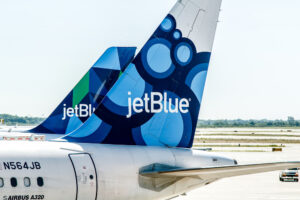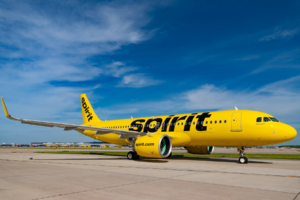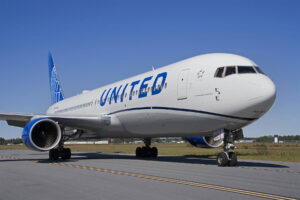Silicon Valley Startup to Build Supersonic Jets With ‘Affordable’ $5,000 Flights

Silicon Valley entrepreneur Blake Scholl is building a prototype of a new jet called “Boom” in order to create “affordable” supersonic transatlantic passenger flights. He and a team of aerospace engineers will build and test the prototype by the end of next year. Commercial flights could begin with just a few years. Scholl hopes the new jet will allow for people to commute to different parts of the world in the same day.
“This isn’t science fiction, we are actually doing this. You will be able to fly New York to London in three-and-a-half hours for $5,000 return, [which is roughly] the same as [the cost] of business class,” Scholl says.
Scholl has joined forces with Sir Richard Branson, who announced this Wednesday that his Virgin empire would help build a new generation of supersonic jets, The Guardian reports. Virgin has also signed an option on the first 10 planes to hopefully introduce 3.5-hour passenger flights between London and New York. Branson has also already launched plans for $250,000-a-ticket flights into space.
Scholl, who is the chief executive of Boom, says that besides partnering with the Virgin Group, they have also signed a letter of intent with a major London-based airline that wants to buy $2 billion worth of the jets.
“We are offering a service that’s way faster, but for the cost of business [class],” Scholl said. “There is a huge market out there, more than 20 million a year fly business class internationally. We can take them to Mach 2.2 (1,451mph, and faster than Concorde which flew at a top speed of Mach 2.04) and save them half their journey time.”
[Photo: Boom]























Simple, if not complaints from people WHO WILL NOT FLY THOSE FLIGHTS from inland areas, particularly in US and EU by those very 2 Governments on NOISE POLLUTION. The ironic thing is that it'd make more sense to fly heavier-used (by business pax) like LHR-JFK, but is too short for real time savings (realistically more like 30-35%) and on the other hand the longer length TransPacific flights (say LAX-NAR/BKK/SYD/PEK...) would get closer to 50% time savings, but are less used by business pax and those tourist pax who could afford such flights. Either way I don't see much of a true business case for any flight above like Mach 1.5. Another problem, if for both Airbus and Boeing (both tried that before) the complexities of SST commercial flight meant DECADES of R&D and BILLIONS (of U$D, EUR or GBPs) in costs, WHAT ON EARTH is telling me a start-up in both manufacture and financial backing (sorry, Sir, but that's how people still think of You...) would get that off-the-ground for less money, quicker and BE PROFITABLE (all at the same time)? WISHFUL THINKING... (lets them waste THEIR MONEY and NOT OURS)
why NYC-LON? Because supersonics tend to have short legs...
If they weren't flying such "short" routes as London-New York, they should be able to cut more than half the time, since ordinary planes must fly slower than Mach 1.0, and Mach 2.2 is more than 2 times as fast as anything below Mach 1.0. Still, even if it were not much more than 1/2, wouldn't cutting 10-hour flights to 5, 12-hour flights to 6, and 15-hour flights to 7.5 be more ground-breaking than just reinstating the London/Paris-only to east coast USA only Concorde travel? If you didn't live near in those areas, the time wasted connecting to a Concorde flight rarely made sense. So the capability (mentioned in the linked article) for Los Angeles - Sydney sounds more interesting than simply the restart of supersonic on London - New York. And all the examples given are coastal city to coastal city, which brings up the question: Will supersonic flights ever be practical from inland locations where you can't "hide" the sonic boom (over the ocean)?
Scholls is talking like Supersonic airline travel is something new. While I understand the reference, why would you call your airplane 'boom'?